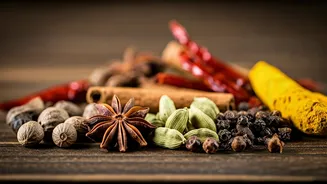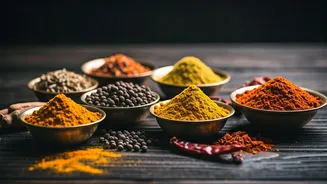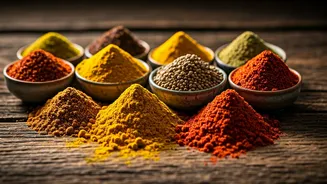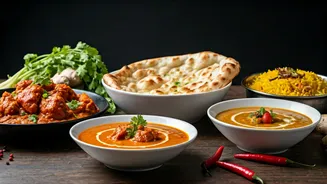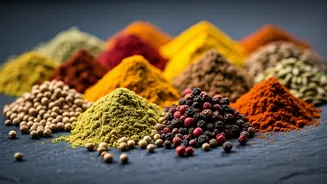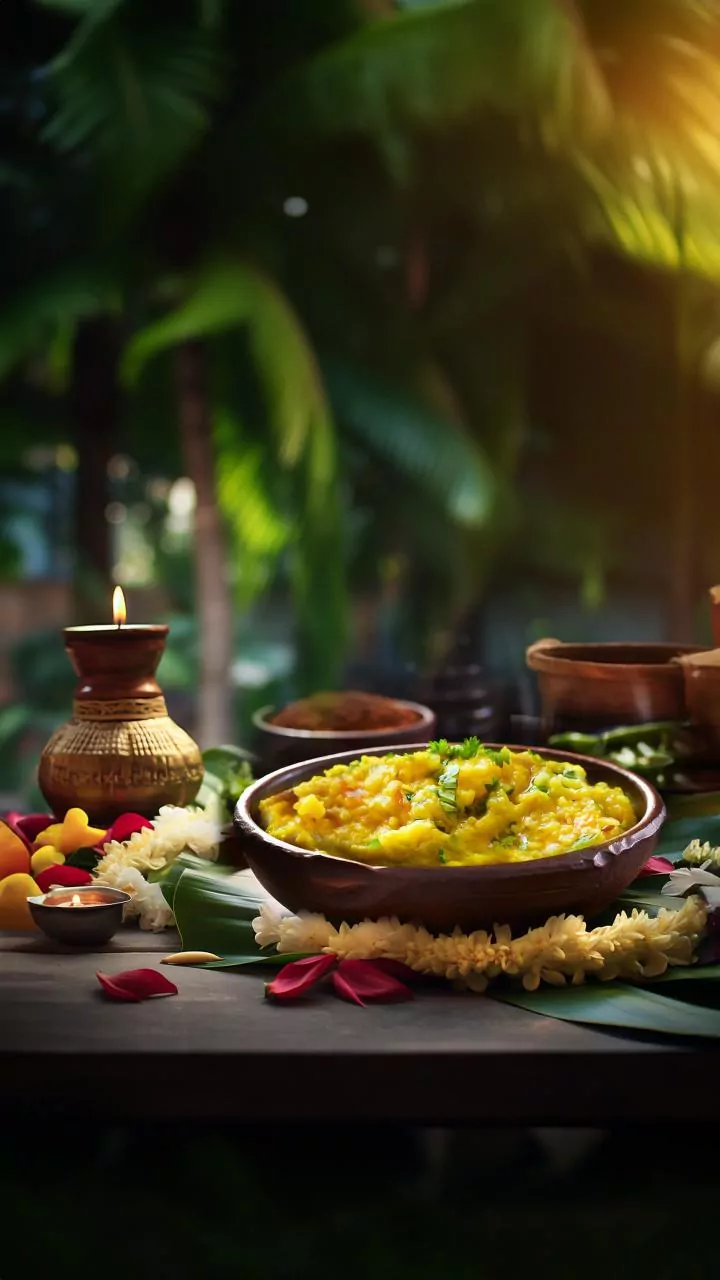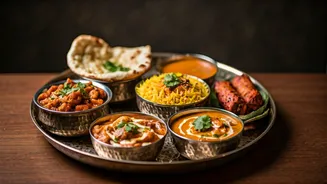Spice Origins Unveiled
India, with its rich history and diverse climate, is the birthplace and global hub for an array of spices. Many of the most essential Indian spices originated
in the country's fertile lands. Turmeric, with its golden hue and earthy undertones, hails from South Asia. The fragrant cardamom, a key ingredient in many sweet and savory dishes, also has roots in this region. Cumin, with its warm, earthy essence, adds depth to various Indian recipes. Coriander, known for its citrusy notes, and fenugreek, offering a subtly sweet and slightly bitter flavor, are other vital spices. These spices, along with others like ginger, garlic, and chili peppers, have played a vital role in the history of Indian cuisine and continue to shape the flavor profiles of Indian dishes worldwide.
Flavor Profile Dynamics
Indian spices are not merely ingredients; they are the soul of Indian cooking, contributing depth, complexity, and distinct flavor profiles. Each spice brings a unique dimension to the dishes, creating a harmonious blend of tastes. Turmeric lends its warm, slightly bitter taste, while also providing a vibrant yellow color to the food. Cardamom introduces a fragrant, floral aroma, often used to balance the sweetness in desserts or to add a unique twist to savory dishes. Cumin offers an earthy warmth, often found in curries and lentil dishes. Coriander introduces fresh, citrusy notes. Fenugreek adds a slightly bitter, maple-like flavor that enhances the overall taste. Together, these spices blend to create flavors that range from mildly aromatic to intensely pungent, giving Indian food its incredible versatility and appeal.
Spice Blends Decoded
Beyond individual spices, the art of Indian cooking involves the skillful creation of spice blends, known as masalas, to enhance the flavor profiles of dishes. Each region and even each household has its unique blend, which is a closely guarded culinary secret. Garam masala, a warming blend that often includes cinnamon, cardamom, cloves, and nutmeg, is a staple in many Indian kitchens, adding a complex warmth to dishes. Curry powder, although a British invention, is widely used in Indian cooking, it's a blend of turmeric, coriander, cumin, and chili powder. Furthermore, regional variations abound: each type of blend reflects local tastes and the availability of spices. These blends are used judiciously to ensure the balance of flavors, enhancing the overall taste and creating a complete and delicious meal.
Culinary Applications Explained
The application of Indian spices is where the magic of Indian cooking truly comes to life. Spices can be used in numerous ways, from the initial tempering of oil to the final garnish. The tempering process involves heating oil or ghee and then adding spices like cumin seeds, mustard seeds, and asafoetida. This process unlocks the aromas of the spices and infuses the oil with flavor. Spices can be added throughout the cooking process. For example, ground spices like turmeric, coriander, and chili powder are added to the gravy or sauce base to create flavor. Whole spices, like cinnamon sticks and bay leaves, can simmer in stews. Even after the dish is cooked, fresh spices or spice blends, like garam masala, can be added for a final touch of flavor. This layering of spices at various stages is what defines the richness and complexity of Indian cuisine.
Regional Spice Variations
Indian cuisine is characterized by its regional diversity, and this is highly reflected in the spice usage. North Indian cuisine often uses rich, creamy gravies with spices like cardamom, cloves, and bay leaves. South Indian cooking, on the other hand, is known for its use of curry leaves, mustard seeds, and a blend of spices. East Indian cuisine highlights the unique use of five spice blends, while West Indian cuisine often includes a combination of regional spices. Each region uses specific techniques, blends, and ratios, tailoring dishes to the ingredients available in that area. This geographical variety also has deep historical and cultural origins. The varying use of spices in Indian cooking reflects the diversity of its regions.
Spice Storage and Freshness
To preserve the flavor and potency of Indian spices, proper storage is crucial. Spices should be stored in airtight containers, away from direct sunlight, heat, and moisture. Sunlight can degrade the essential oils that give spices their flavor, while moisture can lead to clumping and loss of flavor. Spices stored properly can last for months, if not years, but it's essential to check for freshness. Spices often lose their potency over time. Ground spices usually have a shorter shelf life than whole spices. The flavor will reduce significantly after six to twelve months. To ensure freshness, it's best to buy spices in small quantities, store them carefully, and smell them before using. If the aroma is faint or dull, it's time to replace the spice.
